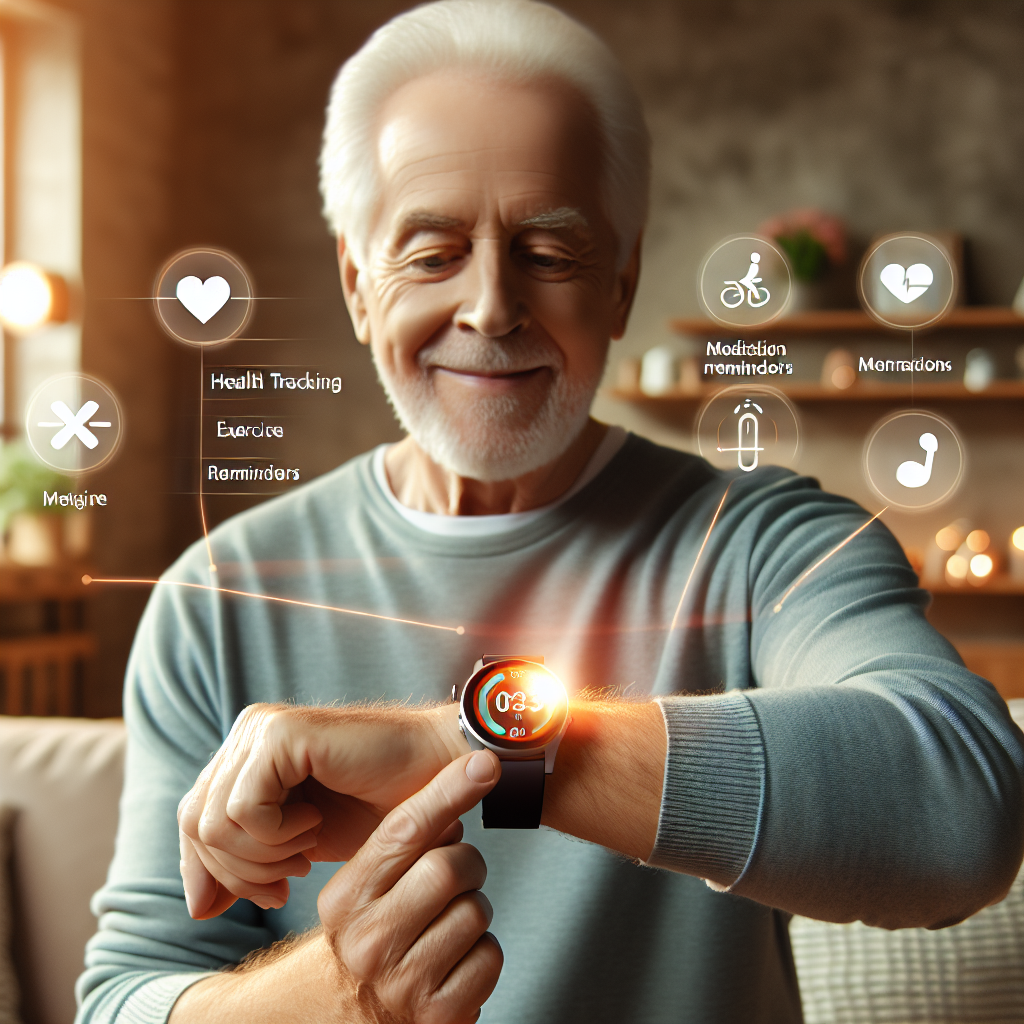Retirement used to mean slowing down. Today, it means gearing up for one of life’s most exciting chapters. As we embrace this new vision of retirement as a journey of self-discovery and personal fulfillment, technology is emerging as a powerful ally in maintaining independence and enriching the lives of older adults.
At the heart of independent aging is the desire to remain self-sufficient while continuing to grow, learn, and contribute meaningfully to society. Technology is transforming this possibility into reality for millions of seniors who wish to age on their own terms, in their own homes, pursuing interests that bring them joy and purpose.
The digital revolution isn’t just for the young – it’s creating unprecedented opportunities for older adults to maintain their autonomy while enhancing their quality of life. For those approaching or enjoying retirement, embracing technology means embracing freedom.
Smart Homes, Smarter Living
Imagine waking up to gentle lighting that automatically adjusts to prevent falls, a voice assistant that reminds you of today’s medication schedule, and a coffee maker that starts brewing when your fitness tracker detects you’re awake. This isn’t science fiction – it’s the reality of smart home technology that’s making independent aging more accessible than ever before.
Voice-activated assistants like Amazon Echo and Google Nest have become friendly companions in many seniors’ homes. These devices respond to simple voice commands, allowing older adults to control their environment without physical exertion. “Alexa, turn on the kitchen lights” or “Hey Google, what’s the weather today?” – these simple phrases unlock a world of convenience and control.
Mary Johnson, 72, shares how her smart home has transformed her daily routine: “Before, I struggled with light switches when my arthritis flared up. Now I just ask Alexa to handle the lights, adjust the thermostat, or even lock my doors at night. It’s given me back my independence.“
Automated lighting systems are particularly valuable for aging in place. Programmed to turn on before dark, they help seniors with vision changes navigate their homes safely and can even help those experiencing sundowning, a symptom associated with dementia. Motion-activated night lights illuminate pathways to bathrooms, reducing fall risks during nighttime trips.
Smart thermostats learn your preferences and automatically maintain comfortable temperatures, eliminating the need to fiddle with complicated controls. This technology not only provides convenience but also offers significant energy savings – a welcome benefit for retirees on fixed incomes.
Security devices like video doorbells and smart locks provide peace of mind for both seniors and their families. With these tools, older adults can see who’s at the door without approaching it and even grant access to caregivers or family members remotely. These technologies align perfectly with an active lifestyle by offering both freedom and security – the confidence to live independently with the safety net of connected care.
Personalized Technology for Evolving Needs
One of the most important insights about technology for independent aging is that it isn’t one-size-fits-all. The technological needs of older adults evolve over time and vary widely from person to person, reflecting the diverse and rich tapestry of experiences that make up a lifetime.
A 65-year-old recent retiree might gravitate toward learning platforms and social media to explore new interests and maintain connections, while someone in their 80s might prioritize health monitoring devices and medication management systems. The beauty of today’s technology landscape is that it offers customizable solutions for every stage of the retirement journey.
Health monitoring has been revolutionized by wearable devices like smartwatches and specialized sensors. These tools can track vital signs, detect falls, monitor sleep patterns, and even remind users to stay hydrated. For those managing chronic conditions, these devices provide valuable data that can be shared with healthcare providers, enabling more personalized care and earlier interventions when needed.
Robert Chen, 69, discovered a passion for photography after retirement. “I never had time before,” he explains. “Now I use tablet-based learning apps to take courses, join online photography communities to share my work, and use specialized editing software. Technology has helped me discover talents I never knew I had.“
This embodiment of continuous personal growth during retirement reflects the core philosophy that these years represent a unique opportunity to explore untapped interests and develop new skills. Technology serves as both the gateway and the guide to these pursuits, offering accessible platforms for learning and connection.
Medication management systems range from simple smartphone apps with reminder alarms to sophisticated automated dispensers that release the right pills at the right times. These tools address a critical aspect of independent aging – proper medication adherence – which can prevent complications and hospitalizations that might otherwise compromise independence.
Safety and Community: The Dual Promise of Technology
Perhaps nowhere is the value of technology for independent aging more evident than in its dual capacity to keep seniors safe while fostering meaningful connections. This powerful combination addresses two of the most significant challenges to successful aging: physical vulnerability and social isolation.
Smart technology and artificial intelligence are creating invisible safety nets in seniors’ homes. Fall detection systems can automatically alert emergency services or family members if a fall occurs. GPS trackers help those with memory challenges navigate their neighborhoods safely. Stove monitors and automatic shut-off devices prevent potentially dangerous situations in the kitchen.
Dr. Emily Carter, a gerontologist specializing in technology for aging, notes: “The most successful aging-in-place technologies are those that provide safety without sacrificing dignity. The best systems work quietly in the background, intervening only when truly needed.“
Beyond physical safety, technology offers powerful tools for combating isolation – a significant risk factor for cognitive decline, depression, and numerous health issues among older adults. Video conferencing platforms like Zoom and FaceTime have revolutionized how seniors stay connected with loved ones, making distance less of a barrier to meaningful interaction.
Social media platforms, when used thoughtfully, can help older adults maintain existing relationships and form new ones based on shared interests. Online communities centered around hobbies, former professions, or life experiences provide spaces for meaningful engagement and continued contribution.
The I-Care system exemplifies technology’s community-building potential, connecting older adults with mild cognitive impairment to long-distance family members while supporting daily tasks and continued home care. This type of supportive technology enables aging in community rather than in isolation.
Virtual reality (VR) is emerging as another frontier in community engagement for seniors. VR programs can transport older adults with mobility limitations to museums, natural wonders, or family gatherings they couldn’t otherwise attend. Some senior living communities are using VR for group activities, creating shared experiences that foster connection and conversation.
These technologies align perfectly with the understanding that retirement isn’t about withdrawing from society but rather engaging with it in new and fulfilling ways. They create pathways for seniors to remain active participants in their communities while enjoying the comfort and familiarity of their own homes.
Building Confidence Through Accessible Technology
For technology to truly support independent aging, it must be accessible and user-friendly. Seniors who didn’t grow up in the digital age may approach new technologies with hesitation, but well-designed, intuitive tools can quickly build confidence and competence.
Senior-friendly design considers physical changes that often accompany aging, such as decreased vision, hearing loss, and reduced fine motor control. Smartphones and tablets with larger text options, voice-to-text capabilities, and simplified interfaces remove barriers to digital participation. Hearing aid-compatible devices ensure that auditory information is clearly conveyed.
Thomas Williams, 78, recalls his initial reluctance to embrace smart home technology: “I was intimidated at first. But my granddaughter set up a simple system with just a few features and taught me how to use it. Once I mastered those basics, I wanted to learn more. Now I’m the one showing my friends how to set up their own smart homes.“
This growing confidence often creates a positive spiral. As seniors successfully navigate one technology, they become more willing to try others, gradually expanding their digital capabilities and independence. Community-based technology training programs specifically designed for older adults can accelerate this process, creating supportive environments for learning and experimentation.
The empowerment that comes from technological self-sufficiency connects directly to personal fulfillment. When older adults can manage their own environments, access information independently, and connect with others on their own terms, they maintain agency over their lives. This control is essential to the sense of purpose and meaning that defines a satisfying retirement.
The Future of Aging with Technology
As we look toward the horizon of independent aging technology, we see a landscape rich with promise. Advances in artificial intelligence, robotics, telehealth, and smart home integration are converging to create unprecedented possibilities for aging in place with dignity and joy.
Telehealth consultations have already transformed healthcare access for many seniors, eliminating transportation barriers and reducing exposure to contagious illnesses. The next evolution of these services will likely include more sophisticated remote monitoring capabilities, AI-assisted diagnosis, and virtual reality therapy options.
Robotics may play an increasing role in supporting independent living, with innovations ranging from medication-dispensing robots to companion robots that provide both practical assistance and social interaction. While nothing replaces human connection, these technologies can supplement care networks and provide consistent support.
The integration of various smart systems into cohesive, easy-to-use platforms will make technology even more accessible to older adults. Rather than navigating multiple apps and devices, seniors may soon have centralized control systems specifically designed for their needs and preferences.
However, as we embrace these technological possibilities, we must ensure they remain tools for enhancing human connection and personal growth rather than substitutes for them. The most successful aging technologies will always be those that amplify seniors’ abilities to live according to their values and pursue what matters most to them.
The future of aging with technology holds the promise of creating a society where retirement truly represents freedom—freedom from unnecessary limitations, freedom to explore new interests, freedom to remain in cherished homes and communities, and freedom to continue writing meaningful new chapters in life’s ongoing story.
By embracing inclusive, empowering technology, we can transform retirement from a time often associated with decline into an exciting journey of continued growth, contribution, and fulfillment. In this vision, technology doesn’t just support independent aging—it helps reveal the unlimited possibilities that come when wisdom and experience meet the freedom to explore life on one’s own terms.

